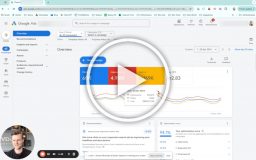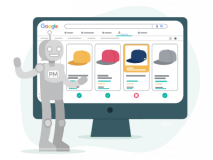I’m part of a Slack group for Meta Ads marketers (Foxwell Founders), and I saw a great question come from a DTC brand:
”What metrics should my agency report to me?”
I posted my reply but could tell I had a lot of thoughts on the topic, so I thought I’d venture into an article. Two thousand words later, I believe we have a great answer.
But first, I want to list my three primary reporting philosophies as a marketer and business owner:
1) A metric is a key performance indicator. It indicates performance.
If you’re following a metric, but it’s not actually predicting/indicating anything that supports your goal, it’s not worth following.
Luckily, for eCommerce, it’s often pretty simple. The goal is to drive the highest revenue to maximize profits.
2) Less is more when it comes to metrics.
KPI creep is a real thing, and it happens when you start adding another, then another, then another, and then yet one more KPI that could also be good to see on a recurring basis.
Don’t do this.
Stick to the main KPIs. Preferably three to seven.
If you want to see the other numbers, then go into the ad account and take a look. Otherwise, you’re just asking for confusion and paying too much for a report.
The one caveat I will offer is that:
3) No metric can stand alone.
Looking at too few metrics in a report is just as dangerous as having too many metrics in a report.
I have two easy examples:
- ROAS without revenue is meaningless
- Revenue without ROAS is reckless
The only metric I can think of that can stand alone is the profit/contribution margin. However, from a Google Ads perspective, it doesn’t help diagnose a problem or list the opportunities out there.
One of my favorite pieces of software for diagnosing PPC issues is Optmyzr. They have a tool called the PPC Detective. It allows you to dive deep down the rabbit hole to find the underlying metrics that caused revenue to drop/increase.
Sometimes it’s easy, and it’s just clicks. But, sometimes, you get key information that you can act on.
Now, let’s get into what metrics your agency or in-house team should report on.
Time Frame & Comparisons
Comparisons should be made against:
- Year-over-Year: You should always review data comparisons year over year.
- Targets: Your target for a metric should be visible at all times when presenting the target.
Month-over-month can be useful in the first year to gauge if you’re still growing, but even in your second year, you should be ditching this.
The only area where you can use month-over-month comparisons is if you average them out.
Always adjust for promotions and holidays. Keep a list of promotions you’ve run year-over-year. Always keep a calendar of what holidays were last year in any given month to avoid false positives/negatives in your performance analysis.
Core KPIs for Reporting
- Spend
- Revenue
- ROAS
- Contribution Margin (aka Profit after COGS & ad spend)
These are your four main KPIs that you should track. I don’t believe there are any surprises here.
If these numbers are up, then you’re generally doing well. If they’re down, you’re generally doing poorly.
The surprise you’ll see is my next core KPI for Google Ads. But first, I want to talk a bit about why contribution margin (or profit after COGS & ad spend) is relevant.
The Case for Contribution Margin (aka Profit)
In 2023, I partnered to start a DTC brand in the US. One of the goals was for me to receive a better understanding of operating an eCommerce brand, and hence, create better solutions for our clients.
What I learned was that any time a client has told me tracking profit wasn’t a priority, they’ve been wrong.
There are two levels of tracking profit from your marketing channels:
- Knowing what your profit is
- Replacing ROAS with Profit On Ad Spend (POAS)
The problem is that your contribution margin (profit) can change without your ROAS changing.
Here are three examples:
- Lower prices drive higher conversion rates, but if your ROAS target is the same, you’ll drive lower profit and make less money.
- Improving add-on products in your cart can increase profit by 20-50% per order, but not improve ROAS substantially.
- Any promotion you do needs to be weighed against the profit it drives. Too often, we’re all blinded by the big revenue increases, but too often, it drives less profit than normal.
- Your ROAS target is too high, and you can drive more total profit from Google Ads by lowering your ROAS.
The comeback from clients has always been that they manage profit on their end, and we just need to focus on the ROAS/revenue maximization.
But, the four cases above suggest that there are improvements to be made by knowing your contribution margin.
My recommendation is, therefore, that your reports should include Contribution Margin (profit after COGS & ad spend).
You can measure it with tools like ProfitMetrics.io (all platforms) or Lifetimely.io (Shopify).
Now, onto my surprise core KPI, which, for the most part, doesn’t include those for Google Ads.
Impression Share (Top & Abs. Top Impression Share)
Some of you are newer to the game, so you won’t remember the drama when the average position metric went away. This was a metric that showed us what position our ad/keyword would be shown in on average.
Top & Absolute Top Impression share does the same thing.
Let’s start with definitions (only for Shopping & Search):
- Top Impression Share = The % your ad is shown in the top 4 ad spots
- Absolute Top Impression Share = The % your ad is shown in the #1 ad spot
A low top impression share means you have room to grow.
The benchmarks for top impression share are:
Top Impression Share Benchmarks
- >95% = Overbidding
- 85-95% = Sweet spot
- 70-85% = Room to grow
- <70% = Significant room to grow
Absolute Top Impression Share Benchmarks
- >90% = Overbidding
- 60-90% = Sweet spot
- 30-60% = Room to grow
- <30% = Significant room to grow
You might observe that the targets for Top Impression Share are significantly higher than Absolute Top Impression Share.
This is due to the incremental value you get from improving Top Impression Share over the Absolute Share.
I’d like to point out that the overbidding aspect is relative. If your ROAS is tremendous for a campaign/ad group/keyword, then you might be fine with a 98% Abs. Top Impression Share.
The metric can’t be found for Performance Max. Click share is the equivalent.
Secondary KPIs
Secondary KPIs should stay on the 2nd page of your report. There is no need to review them regularly, but you can go to them if your core KPIs are not hitting their targets.
The main reason to include secondary KPIs is to have a quick way to diagnose decreases/increases in your main KPIs.
Let’s use ROAS as an example.
Low ROAS can be caused by increasing CPCs, lower conversion rates, or a lower average order value. Each of these has different causes and different solutions. Simply staring at a decreased ROAS number doesn’t help you find what to fix.
Here’s my list of secondary KPIs:
- Blended ROAS
- CPC
- CTR
- Conversion Rate
- AOV
- Impression Share
Walkthrough:
- Blended ROAS
- No channel can be judged in a vacuum. You must be profitable. It doesn’t matter how well Google Ads performs if you’re losing money overall on your marketing efforts, even if it’s only by a dollar.
- CPC
- It’s easy to diagnose if lower/higher ROAS is caused by a shift in CPC. Too often, Smart Bidding will have changed the CPCs and caused a change that can be easily fixed.
- CTR
- Same for CTR — You might have changed ad assets, optimized titles, or made any other adjustments without noticing your CTR drop. But if you see revenue is dropping and CTR is dropping, there is a clear place to start fixing things.
- Conversion Rates
- If ROAS is dropping, and your conversion rate is dropping, 90% of the time, it’s not a Google Ads issue. Sometimes it is, but often it’s site/promotion/price/seasonality-related.
- AOV
- Same as conversion rate.
- Impression Share
- Shows you the percentage of impressions you’re getting out of the total impressions you’re eligible for. High top impression share, but low impression share? Try lowering ROAS targets to see it cover new searches that it had decreased previously.
Bonus: Product Data Reporting (Categories, Brands, & Products)
In my opinion, this is the hardest aspect to report on for eCommerce because most eCommerce stores have a lot of products.
But, there are some underlying thoughts I believe are important to report on because you will know your inventory a lot better than any agency you work with.
Within 10 minutes of reviewing a product data report, you can identify:
- Categories that are underspending
- Brands that you have a low margin on, but spend a lot at questionable ROAS
- New products that are nowhere to be found on the spend report
And much more.
Here are some of the data points I believe should be included in the report.
- YoY category/brand reporting
- Any interesting outliers?
- Are any categories not getting as many clicks this year as last year? Why?
- YoY Custom Label reporting
- On Sale vs Not On Sale
- Bestsellers
- New Products
- Pricing (if possible, read more here)
There are a couple of different ways to do this, but the easiest part is:
- SuperMetrics to Google Sheets
- Reports inside Google Ads
- Screenshots from Google Ads
I’m not a huge fan of Looker Studio reports, but if you like working in it and can generate a nice looking reporting for it, then I think it can be a nice addition.
With the metrics sorted, I’d like to call out two important aspects of any reporting.
Split Up in Brand and Non-Brand
Whenever I see reports that are not split up in brand and non-brand, I immediately get worried.
It’s not that I think someone is being outright deceitful, but my biggest concern is what the numbers are truly masking:
Good brand metrics can cover unprofitable non-brand spend.
- This can result in you overinvesting in Google Ads when you really should be putting more money into other channels that are driving the brand searches.
Low branded ROAS can make you underinvest:
- You might wonder, “How can a ROAS from brand traffic be low? ROAS will ALWAYS be better on brand keywords than non-brand.” That’s true, but volume will fluctuate with your other marketing activities.
- If you run TV and stop running TV, you’ll see a decrease in branded search volume. If you’re aggregating brand and non-brand, then the total ROAS will go down.
- This doesn’t mean Google Ads as a channel is doing worse. It just means the branded part of your Google Ads campaigns is doing worse.
- If you join brand and non-brand, you’ll make the wrong decisions about the channel — for better or for worse.
“But what if I get a lot of HIGH ROAS revenue from brand and can afford to have a lower ROAS on non-brand?”
- That might be true, but you’re looking at it the wrong way. You should be looking at your blended ROAS. Blended ROAS should tell you what the ROAS should be in Google, Meta, etc.
- Because Google Ads shouldn’t take all the credit for the brand terms. It’s, therefore, incorrect to say that if you have a high amount of brand traffic, then non-brand Google Ads campaigns should run at a much lower ROAS. You should take some of that credit and lower ROAS on your other platforms.
I can continue with more examples. There is never a good reason to aggregate brand and non-brand reporting.
Display/Video Should Be Reported Separately
Display/Video can hide increasing CPCs for Shopping/Search.
Except for maybe retargeting, I can’t think of a good reason why you would include Display and Video Ads with Search/Shopping.
Ask for Commentary in Your Reports
There are two main reasons you should always have commentary:
- Nobody remembers what happened last year.
- Numbers speak for themselves, but the quality of your agency/team will shine through their commentary.
I love reviewing the numbers to review client marketing, but what I’m really after is to see the insights my team is providing. You should, too.
It doesn’t have to be long.
Asking for commentary in your reports forces people to think about the numbers and not just send them. When they have to think about the numbers, you’ll usually see them dig those 10% deeper where the true insights are.
My Favorite Google Ads Reporting Platforms
- Databox is used at Savvy as I write this for its ability to create custom metrics
- TripleWhale is great to pull KPIs across channels
- ProfitMetrics for the contribution margin and blended ROAS information
- Lifetimely (Contribution Margin & Blended ROAS)
- Looker Studio is great if you like it, but I’ve never really gotten into it
Reporting Should Be Simple
A lot of reports I see from agencies and in-house are too complicated. There are dozens of KPIs and twenty slides to walk through.
You want your report to be six slides at most:
- Core KPIs compared to target
- Secondary KPIs compared to target
- Core KPIs compared to last year
- Secondary KPIs compared to last year
- Link to product reporting data
- Commentary
Any more than that should be covered in a meeting or in a separate document. Your reports should be simple.
What did I miss? Do you have a favorite KPI you like to see in your Google Ads reports? Post it in the comments below.






